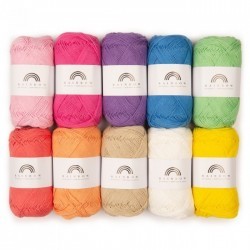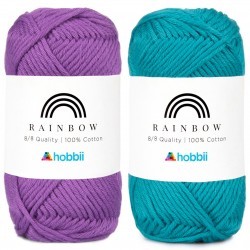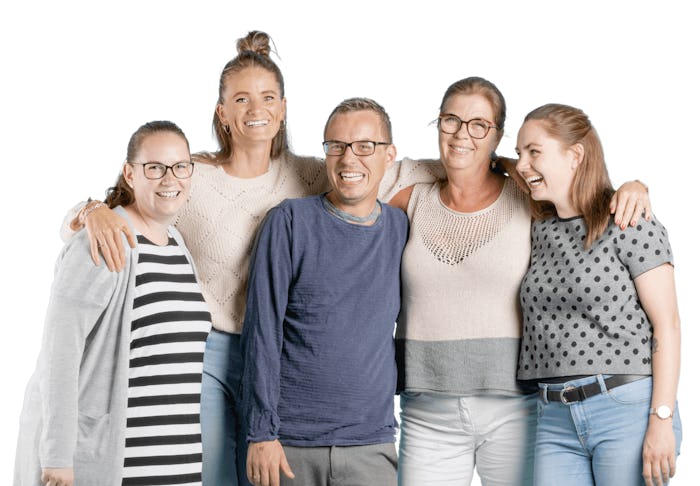Have you spotted our Rainbow line and thought: "I wonder what those cryptic numbers in the name actually mean?"
The numbers are - to keep it short - an old way of indicating the thickness of the yarn. The method may have different names depending on the country and region, but it’s often called the count system.
The count system uses numbers to indicate the thickness of the individual strands in the yarn and the number of strands used in the yarn.
The first of the two numbers (the number before the dash) indicates the thickness of the individual yarn strand, while the other number (the one after the dash) indicates the number of individual strands the yarn is spun from.
In the old days, the system was used for many different types of yarns. So, back then you could find, e.g., 8/2 cotton yarn, 20/2 flax yarn, and 6/3 wool yarn.
Today, the count system has mostly been replaced by new standard categories of thicknesses that you can see in the table below:

Where the producers usually use the new standards, some also indicate the thickness of cotton yarns according to the old count system.
At Hobbii, we do it too, as you can clearly see on the labels below. You’ll find both tension indicator, recommended needle and hook sizes, as well as the counts 8/4, 8/6, and 8/8 on the labels.

Meaning, the 8/4 yarn is spun from 4 strands of size 8 thickness, and the yarn belongs to the category Super Fine.
8/6 yarn is spun from 6 strands of size 8 thickness and belongs to the category Fine,
and the 8/8 yarn is spun from 8 strands of size 8 thickness and belongs to the category Light.
In the image below, you can see Rainbow Cotton 8/4 (top), Rainbow Cotton 8/6 (middle), and Rainbow Cotton 8/8 (bottom). As you can see, the individual strands that the yarn is made up of are identical when it comes to thickness, but 8/4 is made with 4 strands, 8/6 with 6, and 8/8 with 8 strands spun together.
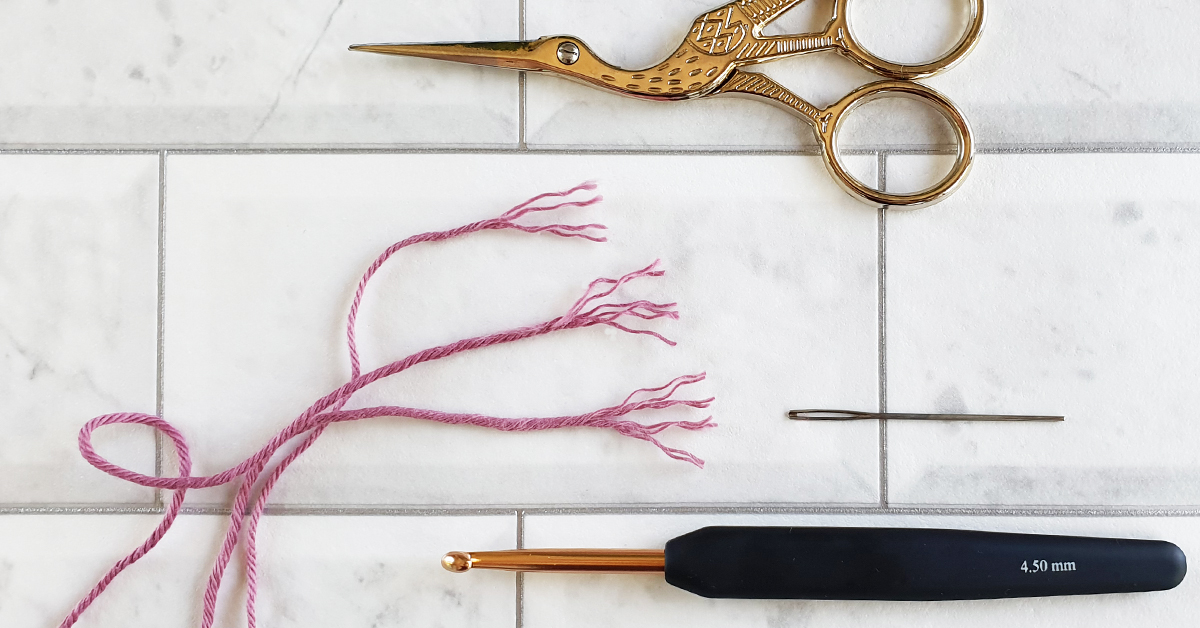
This means that 8/6 is 1½ times thicker than 8/4, while 8/8 is two times as thick. In the photo below, you can see the difference in thickness 👇

Why is the thickness of the yarn important?
When you’re buying yarn for a project, it’s essential that you choose the right thickness. That’s how you ensure that you can hit the correct crochet or knitting tension and, thus, make the project in the right size.
Below, you can see three different swatches. All three were made with the same number of stitches and rows, but because the yarns differ in thickness, the stitches, rows, and, thus, the whole project becomes much larger, all because of the thickness of the yarn. The swatch on the left is made with 8/4, the one in the middle is made with 8/6, and the one on the right with 8/8.
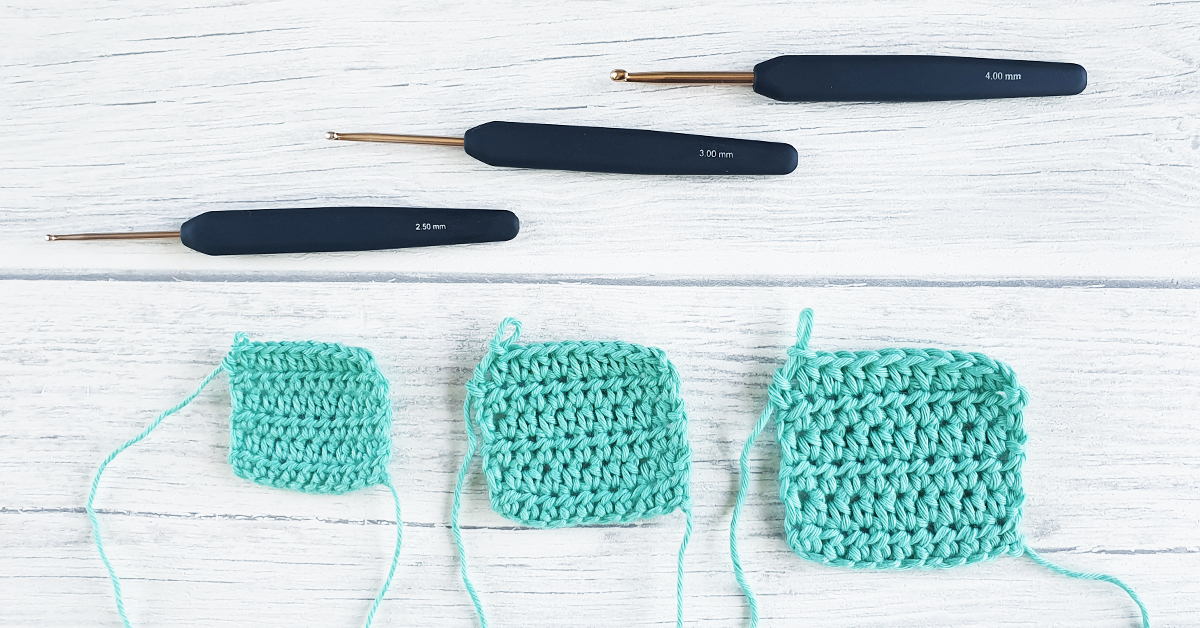
If you need to find the thickness of our yarns, you can always find it on our website right under the product photos. You can also find it on the labels.
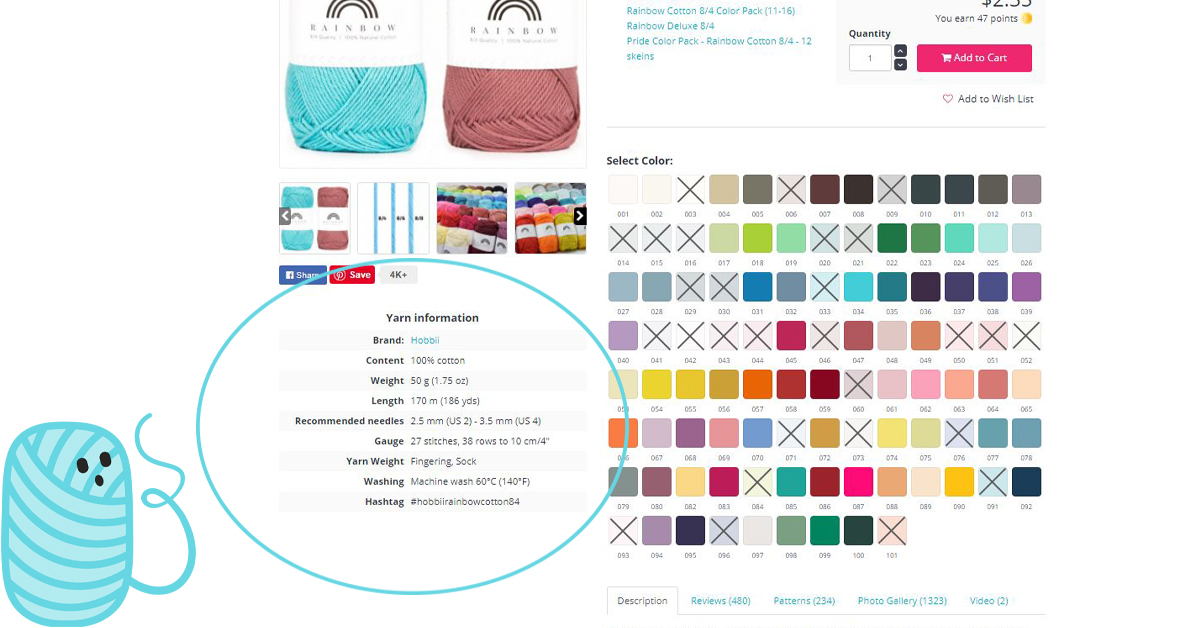
NB: Even though the thickness is indicated according to standardized categories, it’s always a good idea to check the given knitting tension of the yarn too - just to be safe.
If you’re knitting or crocheting from a pattern, it’s always a good idea to make a knitting or crochet swatch. That’s because the tension and, thus, the size of your final project is also determined by how tight or loose your crocheting/knitting is.
Read more about why you should always make a swatch first here.
What can I use 8/4, 8/6, and 8/8 cotton yarn for?
Cotton yarn is incredibly versatile. It can be used for knitting and crocheting alike, it’s durable, and it’s machine washable. In addition, pure cotton keeps its shape, which means that you risk less distortion when it’s washed and used.
We have many patterns for towels, dish towels, dishcloths, and potholders made in cotton since they can handle the daily wear and tear. Take this dishcloth, for example. It’s made with Rainbow Cotton 8/4. You can download it free of charge right here.

And, as if that wasn’t enough, pure cotton yarns are amazing for amigurumi projects! Because of the structure of the yarn, it keeps its shape really well, which means that stuffed animals and dolls will keep their shape and won’t start to droop.
Many amigurumi patterns are based on the 8/4 cotton yarn, but sometimes they’re also made with 8/6 and 8/8 cotton yarn.
You can, e.g., make Hollie the Rhino with cotton yarn 🎀 In the pattern, we recommend Rainbow Cotton 8/4, but you can easily make it with 8/6 or 8/8 if you want her to be larger. Remember, the yarn consumption will be greater if you choose to use a thicker yarn.
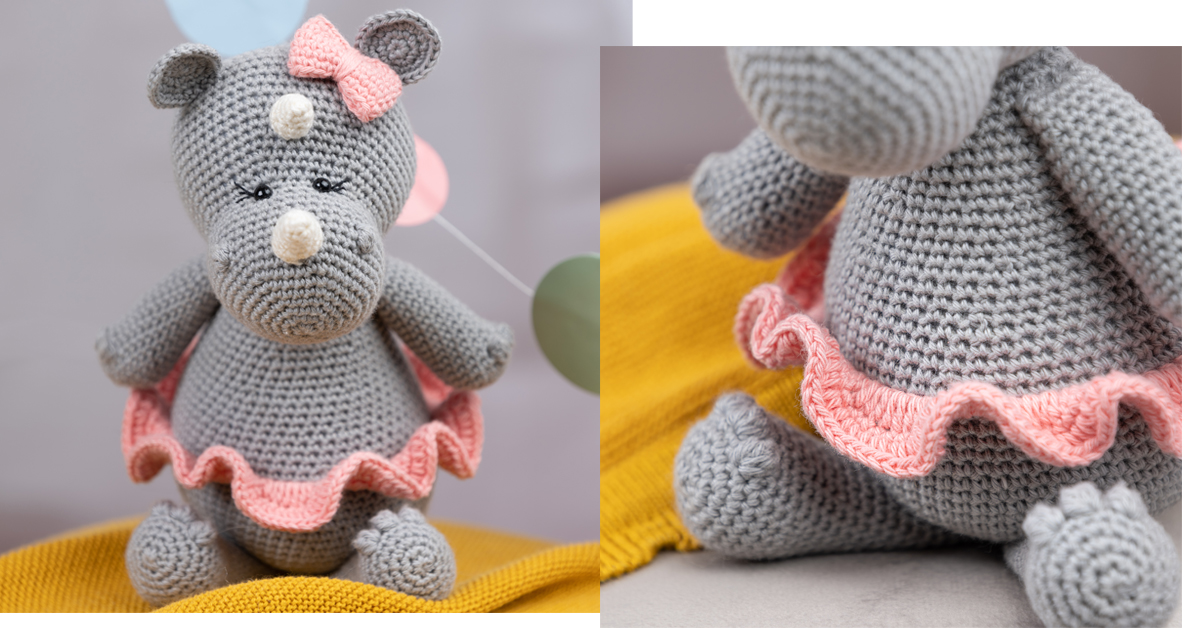
Cotton also works really well in multi-stranded projects. Just take a look at our Tender Tallulah pattern where we’ve used Rainbow Cotton 8/4 in the color Antique Rose (061) with a strand of Mohair Delight in Light Pink (17). Here, Rainbow Cotton 8/4 is a great foundation and adds structure, while Mohair Delight adds a soft and fluffy look to the project.
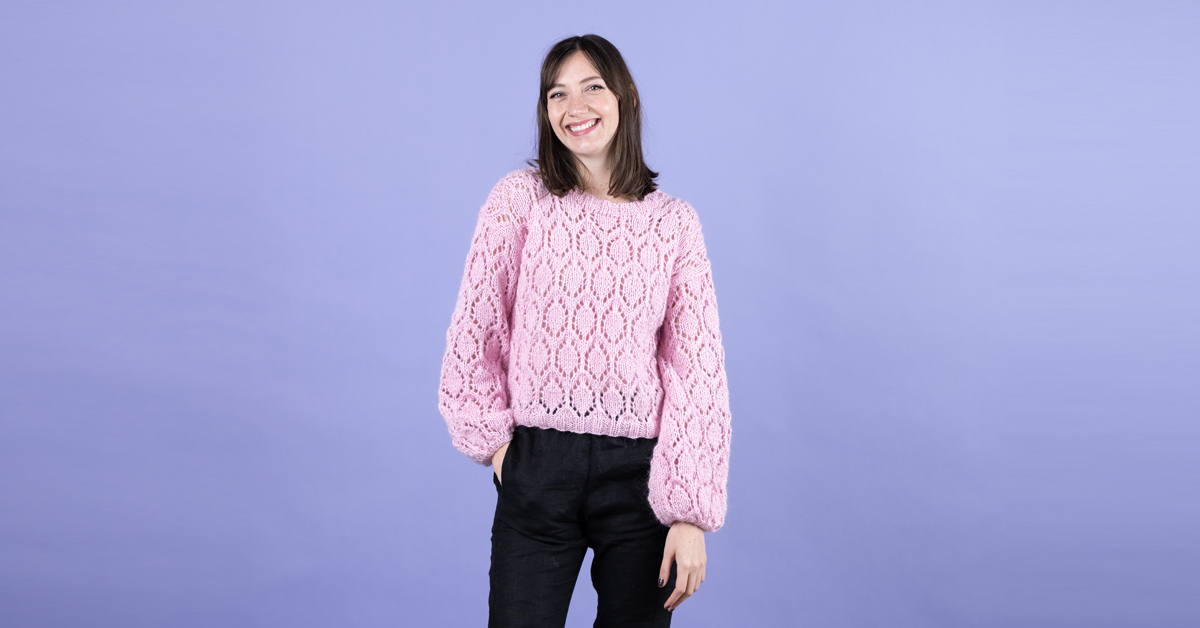
Are you ready to explore our large selection of 8/4, 8/6, and 8/8 yarns?
I always recommend our classic Rainbow Cotton collection, if you want to give it a try. You can see Rainbow Cotton in the 8/4, 8/6, and 8/8 versions here.
We’ve also made pretty packs with beautiful color combinations. It’s perfect if you need several colors for one project and are finding it hard to pick colors that look good together.
I know I’ve been there when I needed to find some nice pastel colors for a blanket I wanted to make. Then it was really handy that I could just grab one of these packs.
Rainbow Cotton 8/4 and 8/8 also come in color-changing versions if you want a more vibrant look to your project. I’ve fallen in love with the color Emma (08). It has so many pretty shades that remind me of springtime.
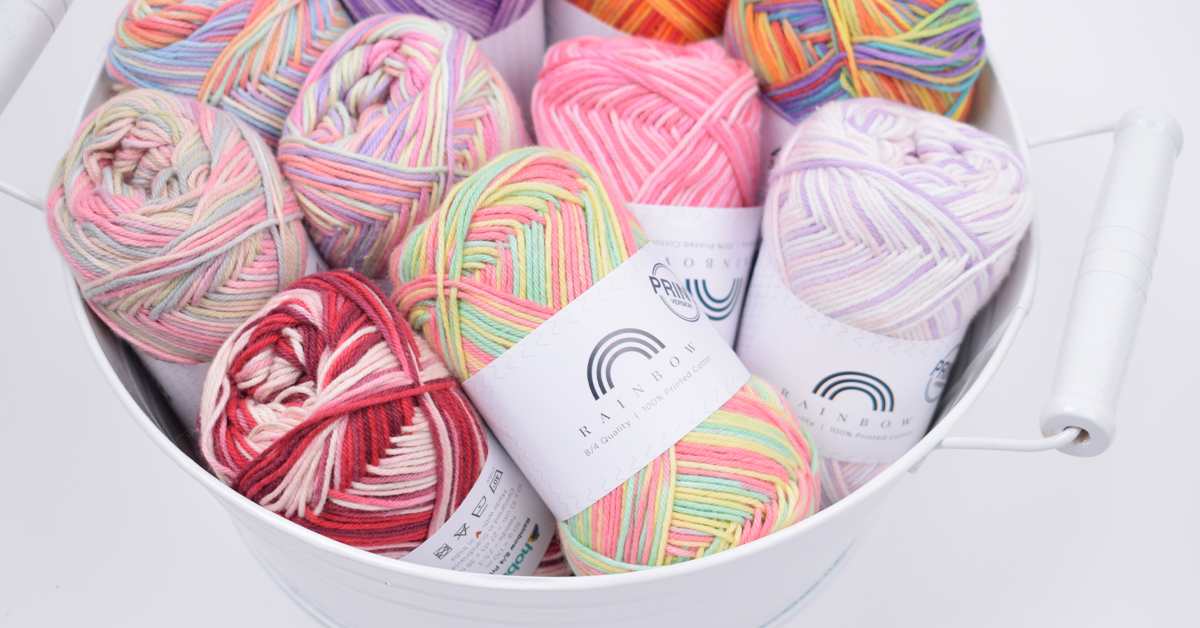
If you want to make a large project, then you could try Cotton Kings Cone 500 instead. It’s the same fabulous yarn quality but in large spools of no less than 1700 meters (1859 yards)!
Click here to see the entire selection of our 8/4 yarn, or here to see the 8/6 yarn, or here to check out all our 8/8 yarn.
Are there any projects you’d like to make with Rainbow Cotton? Tell us about them in the comments below 👇
